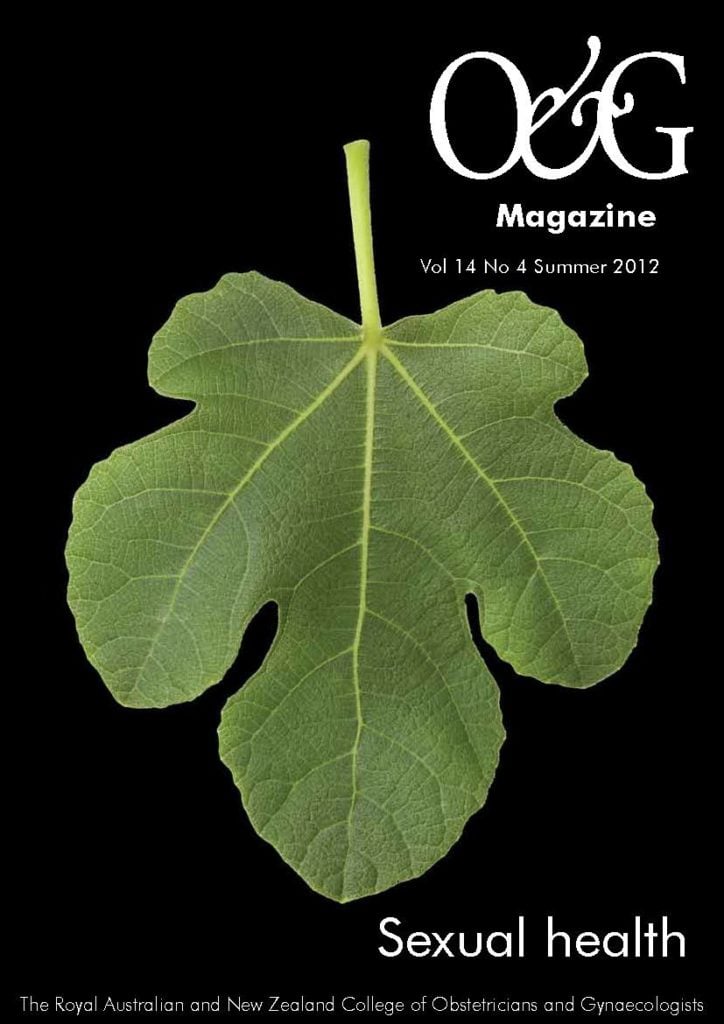Male sexual function is multifactoral and changes to health, age and lifestyle can all result in dysfunction or the perception of it. Open discussion with a medical practitioner is the first step to finding effective treatment.
Male sexual function has three components: libido or sexual desire; erectile function or arousal; and orgasm/ejaculation.
Libido
Libido in men (and women) is driven by testosterone. Desire disorders may present as hypoactive desire disorder (often lifelong), inhibited desire (may be situational) and desire discrepancy (an increasingly common disorder in couples).
Desire problems in younger men mostly have a psychological basis (often around commitment issues). Older men experience a slow decline in testosterone levels at about one per cent a year from the age of 40. This may not only reduce libido, but may also result in a controversial condition called partial androgen deficiency in the ageing male (PADAM). This title is not approved in Australia. As men age, higher levels of sex hormone binding globulin reduce the amount of bioavailable testosterone.
The clinical symptoms of PADAM are said to be deceased libido, erectile dysfunction (ED), depression, fatigue, decreased muscle mass, decreased bone density and increased visceral fat. Yet it should be noted that depression is a significant cause of low libido in men of all ages. Depression and any concomitant health problems have the tendency to lower testosterone levels.
Testosterone is a requirement for nocturnal erections and has a minor role in the quality of sexually induced erections. Testosterone, through its receptor sites in cavernosal tissue, helps improve the action of PDE5 inhibitors that otherwise have poor results in hypogonadal men. Treatment with testosterone may increase libido and provides an improved sense of wellbeing. However, it may also aggravate prostate disorders (this remains controversial), raise haematocrit and aggravate symptoms of sleep apnoea.
Erectile function/dysfunction
ED is defined as the inability to achieve and maintain an erection sufficient to permit satisfactory sexual intercourse. ED is a systemic condition often associated with other potentially serious medical conditions usually vascular and involving endothelial dysfunction, such as diabetes, coronary artery disease and peripheral arterial disease.
Until the late 1980s, ED was suspected to be mainly psychological in origin. ED is now regarded as a mainly physiological disorder as penile erection is a neurovascular event. The most common pathological factor for ED is vascular disease, such as that caused by diabetes, hypertension, smoking and hyperlipidaemia. The present worldwide prevalence of over 150 million men with ED is likely to increase in the coming years, exceeding 300 million men by year 2025, particularly due to the increasing incidence of obesity and diabetes.
The incidence of ED increases with age; smoking; alcohol use; obesity and metabolic syndrome; diabetes; hypertension; hyperlipidaemia; and depression. Some medications, including beta blockers, thiazide diuretics and psychotropic medication, contribute to ED. Asking proactively about ED may expose unknown hypertension, diabetes and ischaemic heart disease as between 39 and 64 per cent of male patients with cardiovascular disease suffer from ED.
Most doctors are skilled at taking a general medical history, but have a level of discomfort in discussing sexual matters. Patients with a sexual problem may have the same discomfort in discussing the problem, so difficulties may not be revealed. However, sexuality may remain important in men and women despite the onset of ill health and the changes of ageing.
Older men require reassurance that changes in their erectile function is a natural process and does not necessarily require treatment other than adjustments to sexual technique. Older men require more stimulation to achieve an erection, have less intense orgasm and reduced ejaculatory volume. Use of condoms can be a problem because of the difficulty maintaining the erection. Repeating the sexual act (refractory period) may require days rather than hours.
Treatment
Initial treatment should be focused on lifestyle changes and management of current medical conditions.
Oral medication
The introduction of sildenafil (Viagra™) in 1998 heralded a revolution as the first oral medication for ED. Tadalafil (Cialis™) and vardenafil (Levitra™) have since followed. These medications belong to the class of selective PDE5 inhibitors that relax corpus cavernosal smooth muscle through the action of nitric oxide on cyclic GMP. They have proved safe and effective for most causes of ED, except severe vasculogenic and neurogenic ED. They are contra-indicated in men who use nitrate medication or the recreational drug amyl nitrate. PDE5 inhibitors also have a role in the treatment of psychogenic ED. Each of the three types has the potential for side effects, which include headache, facial flushing, blocked nose and gastric reflux.
Penile injection
Prostaglandin E1 (PGE1) also known as alprostadil is the medication with the least risk of fibrosis or priapism (prolonged erection). PGE1 is prescribed for men where oral medication does not work or is contra-indicated. It is marketed in Australia as Caverject Impulse™, a neat package where the powder is mixed with water and the dose dialled all within the barrel syringe. Combination mixes available through compounding pharmacies are known as PGE1, phentolamine and papaverine (Trimix). These mixes may have a higher risk of fibrosis and priapism. The treatment of priapism initially involves taking two 60mg pseudoephedrine tablets if the erection remains after two hours.
Vacuum erection devices
These devices create an erection by extraction of air from a cylinder placed over the penis. The vacuum created causes increased blood flow into the penis that is held by a rubber constriction ring. The technique requires practice and preferably the assistance of a partner.
Penile implants
Surgically implantable penile prostheses have been in use for 30 years. These days, implants are inserted as the last resort due to the effectiveness of the other ED treatments. A three-piece inflatable device (penile rods, scrotal pump and fluid reservoir) gives the best cosmetic and functional result. There are low rates of mechanical failure and infection.
A note about ED post radical prostatectomy
Surgery for prostate cancer is a now a common procedure. If the neurovascular bundle on each side of the prostate cannot be saved, then ED will inevitably follow. Treatment with oral PDE5 inhibitors does not work without intact nerves owing to the lack of neurotransmitters. Even with intact neurovascular bundles, the return of erectile function may take from six to 36 months to occur (if ever). The quality of erections also depends on the pre-surgery erectile function. Initial treatment is either PGE1 injection therapy, or oral medication, taken either daily or as required. It is important to keep testing with oral medication from time to time because as soon as oral medication becomes effective, injections can be stopped.
There is some evidence of benefit being on continuous oral medication in the presence of neuropraxia owing to the positive effect of PDE5 inhibitors on the endothelium within the cavernosal tissues.
Orgasm/ejaculation
Male ejaculation disorders are premature or rapid ejaculation, inhibited or delayed ejaculation and retrograde ejaculation. Premature ejaculation (PE) is the commonest disorder, though can be misdiagnosed owing to a common male misconception of how long the intra-vaginal ejaculation latency time (IELT) should be.
There is consensus that ejaculation occurring before 1.5 to two minutes after penetration represents true PE. Ejaculation just before or on penetration can be an extremely distressing condition.
PE can be primary or secondary. Primary PE arises in the ejaculation centre in the medial pre-optic nucleus of the hypothalamus and is no longer regarded as a purely psychological problem, rather neuro-biological. However, it can be accompanied by a secondary performance anxiety that often complicates the situation. Secondary PE may be caused by stress and anxiety, relationship problems or ED.
Men with PE are often reassured with explanation of normal IELT. The traditional behavioural techniques such as the stop-start and squeeze techniques remain popular treatments. The ejaculation-inhibiting effect of some of the selective serotonin reuptake inhibitor anti-depressant medication can be a successful treatment in severe cases.
Inhibited ejaculation is usually an issue with sexual intercourse rather than with masturbation. It can arise where arousal from penetrative intercourse does not match the arousal obtained from masturbation. This condition may be seen in certain personality types. If a man is unhappy in a relationship, and particularly if his partner wishes to conceive, then he may be unable to ejaculate in that situation.
Retrograde ejaculation often occurs after surgery for a tight bladder neck or benign prostate hypertrophy. Neurological conditions and diabetes may decrease bladder neck tightness where the sensation of orgasm is intact, but the semen is directed into the bladder.





Absolutely!!!!!! The introduction of sildenafil citrate in 1998 heralded a revolution when it comes to ED treatment. For millions of men, sildenafil citrate 100mg pills have worked like a miracle, helping them to lead a happy love life once again.